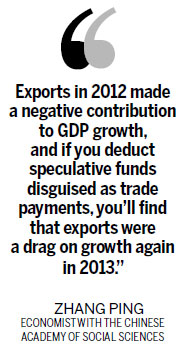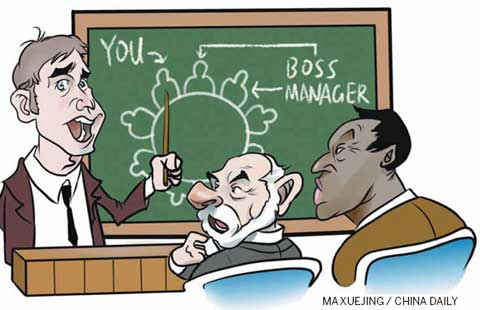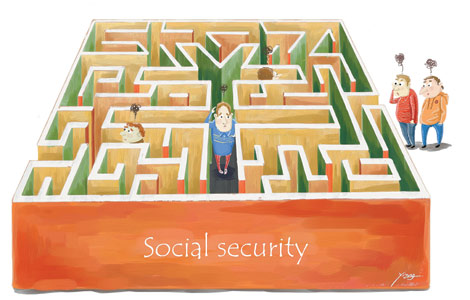Rising loan costs cast shadow over GDP
Updated: 2014-02-11 07:17
By Zheng Yangpeng (China Daily USA)
|
||||||||
Credit | Zheng Yangpeng
Surging borrowing costs are threatening China's economic growth this year, an economist from a top domestic think tank warned.
With growth momentum already slowing, Chinese enterprises will find their earnings increasingly insufficient to cover the cost of debt, with loan rates now exceeding 9 percent.
The situation inevitably raises the question of how the credit-dependent economy can keep expanding at the current pace, said Zhang Ping, deputy director of the Institute of Economics under the Chinese Academy of Social Sciences.
There's a dilemma facing the central bank, said Zhang.
If the People's Bank of China maintains a tight monetary stance and loan rates stay high, economic growth will be constrained.
Cash-starved companies will result in a contraction in business activity, with the Purchasing Managers' Index for manufacturing likely to slide below 50 in the second quarter.
If the PBOC loosens monetary policy to push down borrowing rates, it will have to achieve total social financing - a broad measure of liquidity - of more than 19 trillion yuan ($3.14 trillion) to support GDP growth of 7.5 percent.
But that amount of total social financing would represent 12 percent year-on-year expansion, much faster than last year's gain of 9 percent.
An increase of that scale will cause massive macroeconomic risk, Zhang said, because non-performing loans will pile up faster and the goal of reducing the economy's reliance on credit-fueled expansion will recede even further into the distance.
"To have more sustained and quality growth, we've got to let the growth rate go down," Zhang said.

He said that in addition to a rising dependency on credit expansion and skyrocketing real loan rates, another "abnormality" of the economy is that it's increasingly shifting toward growth fueled by "infrastructure and property industry".
Investment in these activities now accounts for the bulk of total investment. If the market slides and investment in these sectors loses momentum, investment growth will be endangered.
Yet another risk is the massive debt of local governments that rely on land as collateral. If there's a setback in the property market and land values decline, it's unclear how local governments can repay their debt, analysts said.
As of June 30 last year, that debt stood at an estimated 17.9 trillion yuan.
"People always say China's economic growth model is export- and investment-driven. But if you look at the data for the past two or three years, it is becoming solely investment-driven.
"Exports in 2012 made a negative contribution to GDP growth, and if you deduct speculative funds disguised as trade payments, you'll find that exports were a drag on growth again in 2013," he said.
As the economy increasingly relies almost solely on investment, any slowdown in investment could curtail growth.
In the first eight months of 2013, fixed-asset investment grew 20.3 percent. The pace of growth then decelerated throughout the remaining months, slowing to 19.6 percent for the full year.
Based on these figures, CASS has already lowered its forecast for this year's investment growth to 19 percent, down from 20.1 percent just a month ago.
Li Xuesong, deputy director of quantitative and technical economics at CASS, said the revision reflected the increasing difficulty of accessing money while the central government puts "curbing local government debt" as a priority for 2014.
Local governments have fallen in line with this call: As of last month, half of the provincial-level regions had cut their investment growth target for this year below 18 percent.
(China Daily USA 02/11/2014 page15)
Most Viewed
Editor's Picks

|

|

|

|

|

|
Today's Top News
Kerry seeks to 'rule out' possibility of conflict
Official cars to be auctioned in NE China city
Joint operation ensnares poachers
Family-raised poultry rises as new H7N9 source
China's largest private charity elects new chiefs
Sanya orders ban on naked beachgoers
Test to predict corrupt tendencies
Li hears opinions on govt report
US Weekly

|

|












